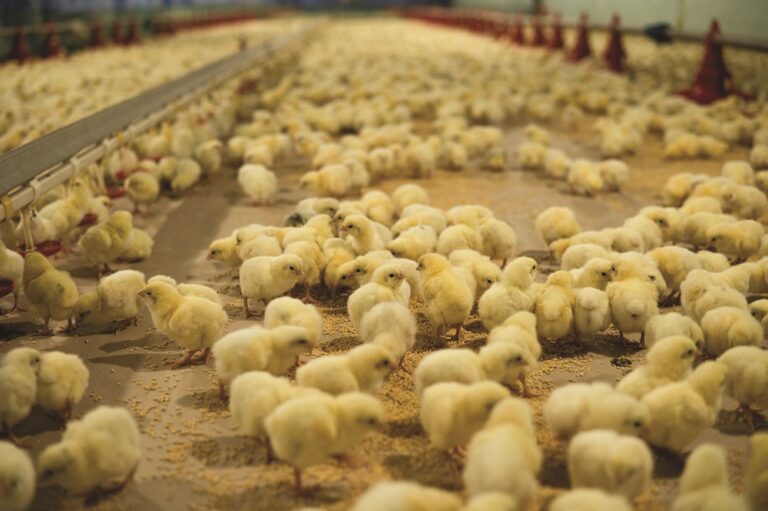By Eloise Lawlor, commercial poultry nutritionist, Premier Nutrition
Raw material markets continue to be uncertain at the start of 2023. At the time of writing, wheat prices are now more than £120 below that of the record highs back in May 2022 but soyabean meal prices are continuing to rise. Therefore, attention has once again turned to alternative protein sources to ease the pressure of using soyabean meal in poultry diets. Coupled with this, there is continued focus on reducing the environmental impact of poultry diets while ensuring performance of birds is maintained.
Soya is still the dominant protein source in many poultry rations for several reasons. From a nutritional point of view, the amino acid profile of soya closely matches the requirement of a laying hen, only deficient in sulphur amino acids which can be cost effectively be supplied as single amino acids. Relative to some alternative protein sources, soya also contains relatively low levels of anti-nutritional factors and offers good nutritional consistency. From a logistics point of view, there is a reliable supply of soya into the UK, making it remain the most attractive protein source on a financial basis. However, with continued price rises and environmental pressures, alternatives are being explored.
Sunflower meal has for some time been the most widely used alternative protein source. There are several grades of sunflower based on the protein level, with either 32% or 36% being the most common in poultry diets. An added benefit of sunflower is the high fibre, which is particularly beneficial in layers diets. Over the past year, availability of sunflower has been hugely affected as Ukraine was a major supplier. But, after several months of uncertainty, we are now seeing a more consistent supply again. However, sunflower cannot fully replace soya unless used in conjunction with other raw materials, and maximum limits should be adhered to in poultry diets.
There has been lots of interest in the use of beans in poultry diets recently, partly due to the agronomic benefits of growing beans within an arable rotation, but also from an economic and environmental point of view. At current high soya prices, beans are attractive in poultry diets. The inclusion of beans can also reduce the carbon footprint of the diet. However, beans are about half the crude protein of soya and therefore similarly to sunflower, will never be able to fully replace soya in poultry diets unless in combination with other high protein raw materials and single amino acids. Also, due to anti-nutritional factors, there is a maximum limit of the inclusion of beans to prevent negative impacts of feed intake and performance. The availability of beans can be limited during the year and therefore some producers may be discouraged if they can only source for a few months at a time.
Due to increased popularity of alternative protein raw materials, as well as high soya prices, more single amino acids are featuring in poultry diets including valine, isoleucine and arginine with benefits being seen both economically and environmentally. With the inclusion of these single amino acids, dietary protein is reduced, while maintaining an optimum amino acid balance to ensure maximum productivity of the birds. Reduced crude protein diets can have a positive impact on litter quality and in turn footpad lesions, as well as environmental benefits due to reducing nitrogen emissions.
Phosphorus emissions is another hot topic in the poultry sector. Rock phosphate is included in poultry diets as a source of phosphorus, but phosphorus is also bound in the form of phytate phosphorus in raw materials, which is indigestible. During the last 12 months we have seen historic high phosphate prices and although prices have more recently eased, they are still double compared to two years ago. Phytase enzymes are typically included in poultry diets to break down phytate enabling phosphorus to be released and utilised by the bird. While the use of phytase enzymes is not new, further consideration is being given to optimum levels of phytase inclusion to maximise the release of phosphorus, reducing the reliance on rock phosphate and reducing overall phosphorus excretion with benefits being seen both economically and environmentally.
Aside from those mentioned there are other protein sources available such as rapeseed, distillers dried grains and solubles (DDGS) and lupins, although use is limited by consistency and availability. In the future, novel ingredients such as insect and algae protein have potential, however legislation constraints, scalability and price make them unattractive in diets today. Consequently, with the aid of single amino acids and enzymes we are maximising the use of raw materials we have commercially available to give both economic and environmental benefits.


